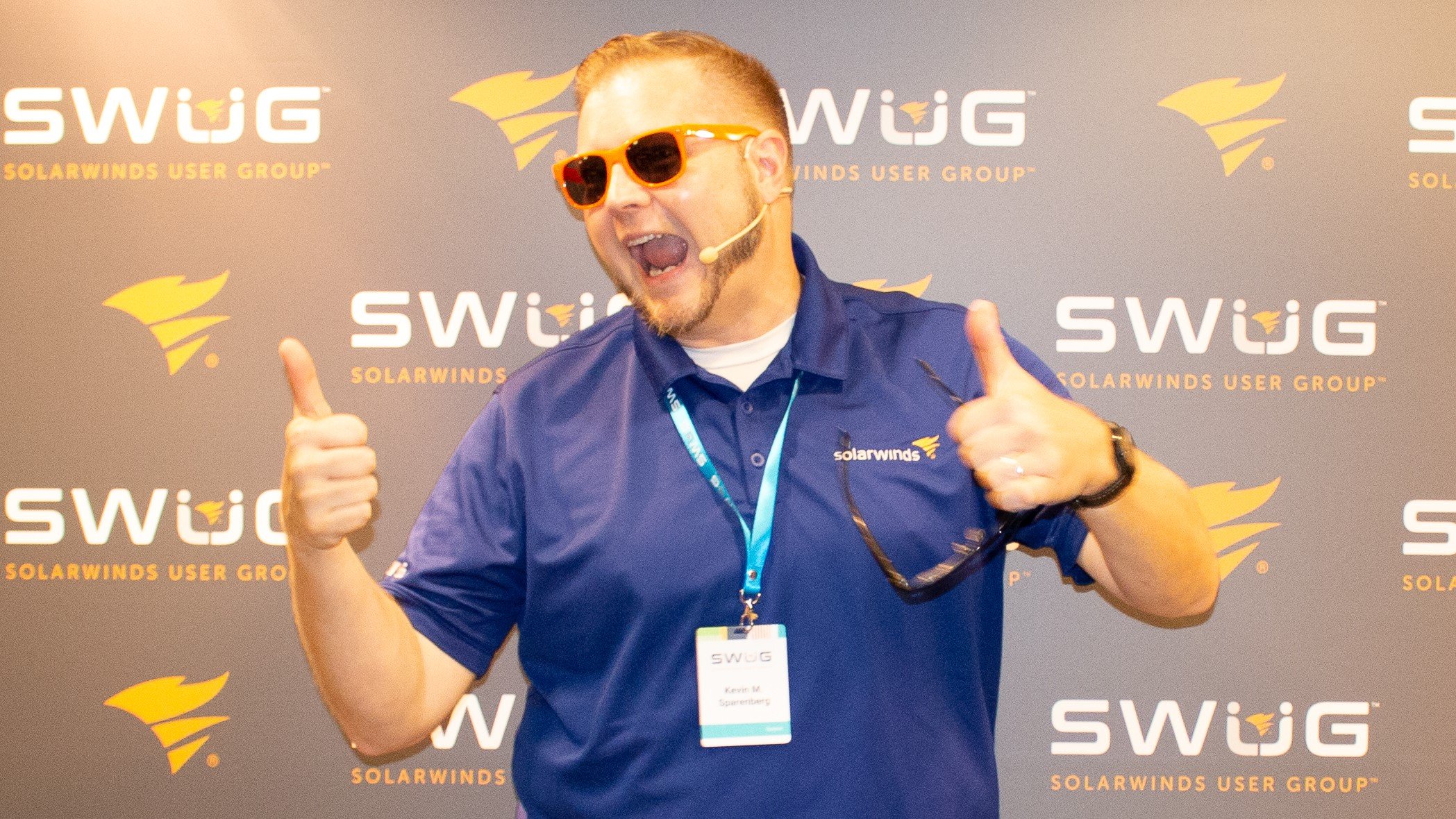 In our first-ever SolarWinds User Group in Singapore, the event was amazing. Although the local SolarWinds staff were a great help, the SWUG attendees were the ones who made the event truly magical. I was so excited to be in the rooms with so many of our friends from Asia. Everyone at SolarWinds knows that I'm nearly incapable of being embarrassed, so I got up in front of everyone and posed for a picture. I may have been the first, but many other attendees and staff continued the trend.
In our first-ever SolarWinds User Group in Singapore, the event was amazing. Although the local SolarWinds staff were a great help, the SWUG attendees were the ones who made the event truly magical. I was so excited to be in the rooms with so many of our friends from Asia. Everyone at SolarWinds knows that I'm nearly incapable of being embarrassed, so I got up in front of everyone and posed for a picture. I may have been the first, but many other attendees and staff continued the trend.
Like previous SWUGs, people came from all over. We had people from Australia, India, Indonesia, the Philippines, and Sri Lanka joining those who were local to Singapore. For most people it was there very first SolarWinds User Group, but I certainly hope it won’t be their last.
The Sessions
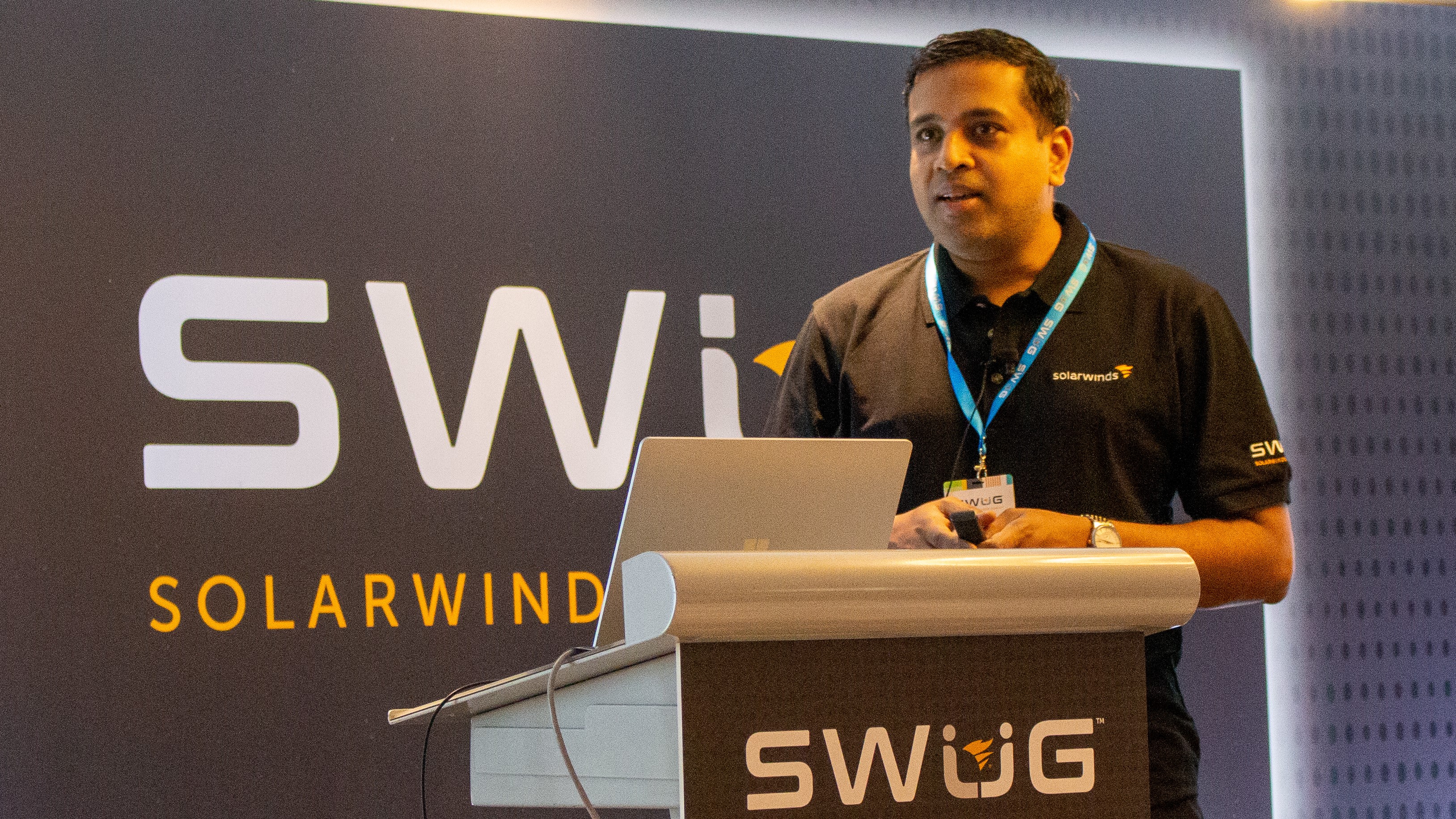 We kicked things off with some light breakfast to make sure everyone had the energy they will need for the day, and then it was off to the races. After welcoming everyone, I surrendered the stage to Aravind Kurapati (@HolyGuacamole) who explained why observability is the next phase of monitoring, how Hybrid Cloud Observability is giving you those capabilities today, and teased some information we’ll be sharing in the upcoming SolarWinds Day [October 19 at 10 a.m. CT / 4 p.m. GMT and October 20 at 12 p.m. SGT].
We kicked things off with some light breakfast to make sure everyone had the energy they will need for the day, and then it was off to the races. After welcoming everyone, I surrendered the stage to Aravind Kurapati (@HolyGuacamole) who explained why observability is the next phase of monitoring, how Hybrid Cloud Observability is giving you those capabilities today, and teased some information we’ll be sharing in the upcoming SolarWinds Day [October 19 at 10 a.m. CT / 4 p.m. GMT and October 20 at 12 p.m. SGT].
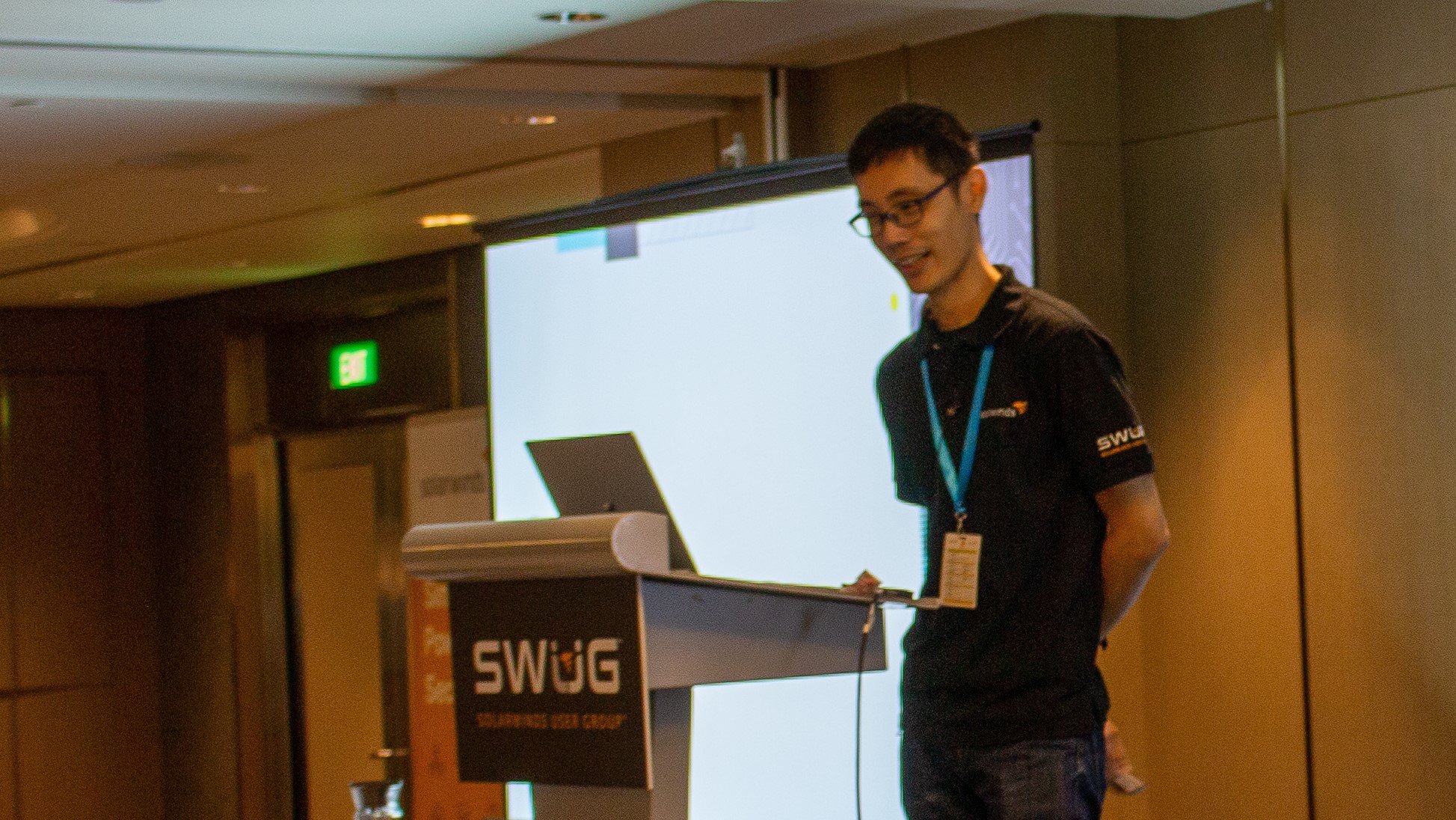 Next up, was Andy Ng (@nding) who was there to present information about SolarWinds Orion Insights (Customer Portal login required). It’s a program that’s been proving extremely helpful with our customers to get a health check on their SolarWinds infrastructure and it’s free. He covered some of what we do on the back-end and the type of recommendations presented. His long history in SolarWinds support made him an ideal candidate to discuss the good, the bad, and the ugly he’s seen in his role when it comes to deployments.
Next up, was Andy Ng (@nding) who was there to present information about SolarWinds Orion Insights (Customer Portal login required). It’s a program that’s been proving extremely helpful with our customers to get a health check on their SolarWinds infrastructure and it’s free. He covered some of what we do on the back-end and the type of recommendations presented. His long history in SolarWinds support made him an ideal candidate to discuss the good, the bad, and the ugly he’s seen in his role when it comes to deployments.
Then it was time to choose between sessions. I was talking about the SolarWinds Orion API and how to get started with SWQL queries. It’s something I’ve long been passionate about and is probably why I spend much of my days on THWACK in the Orion SDK forum answering questions.
 The other session was Jayaraj “Jaya” Kaliamurthi (@jayaraj) talking about how to ramp up with Modern Dashboards. The Hybrid Cloud Observability platform already contains some out of the box dashboards, but this session was all about building your own. I couldn’t attend because I was speaking in another room, but I did hear great things and some people were ready to get started building their own. To help with that, THWACKsters from around the world have shared several that can be imported directly into your own environments.
The other session was Jayaraj “Jaya” Kaliamurthi (@jayaraj) talking about how to ramp up with Modern Dashboards. The Hybrid Cloud Observability platform already contains some out of the box dashboards, but this session was all about building your own. I couldn’t attend because I was speaking in another room, but I did hear great things and some people were ready to get started building their own. To help with that, THWACKsters from around the world have shared several that can be imported directly into your own environments.
We took a break for lunch and had discussions with a bunch of community members. It was great to see the interactions – not just between SolarWinds staff and the attendees, but between the attendees themselves. IT pros helping IT pros is what THWACK and the SolarWinds User Group program is all about.
After lunch, it was a decision between the “Kevin” sessions: I talked more about the Orion API and how to update information in your environment, starting simple and getting more advanced and Kevin Lai (@kevinlai1) spoke about how to best determine the how and why of notifications.
For me, my session was a chance for me to talk about how I use PowerShell to automate some of my own work. Thankfully, the THWACK community members help here as well with some script examples. But remember! Always test scripts in a development environment first! As I said in the room, there is no <CTRL><Z> to undo what you did in error.
The other Kevin walked everyone through a smarter way to think about notifications. Alerts are fine, but it’s not always the best way to represent information. Consider a report, or a dashboard, or maybe you don’t need to even know about that “informational” alert at all. Spoiler alert: you don’t – and you certainly don’t want to be woken up at 3 a.m. to fix something that isn’t an actual problem.
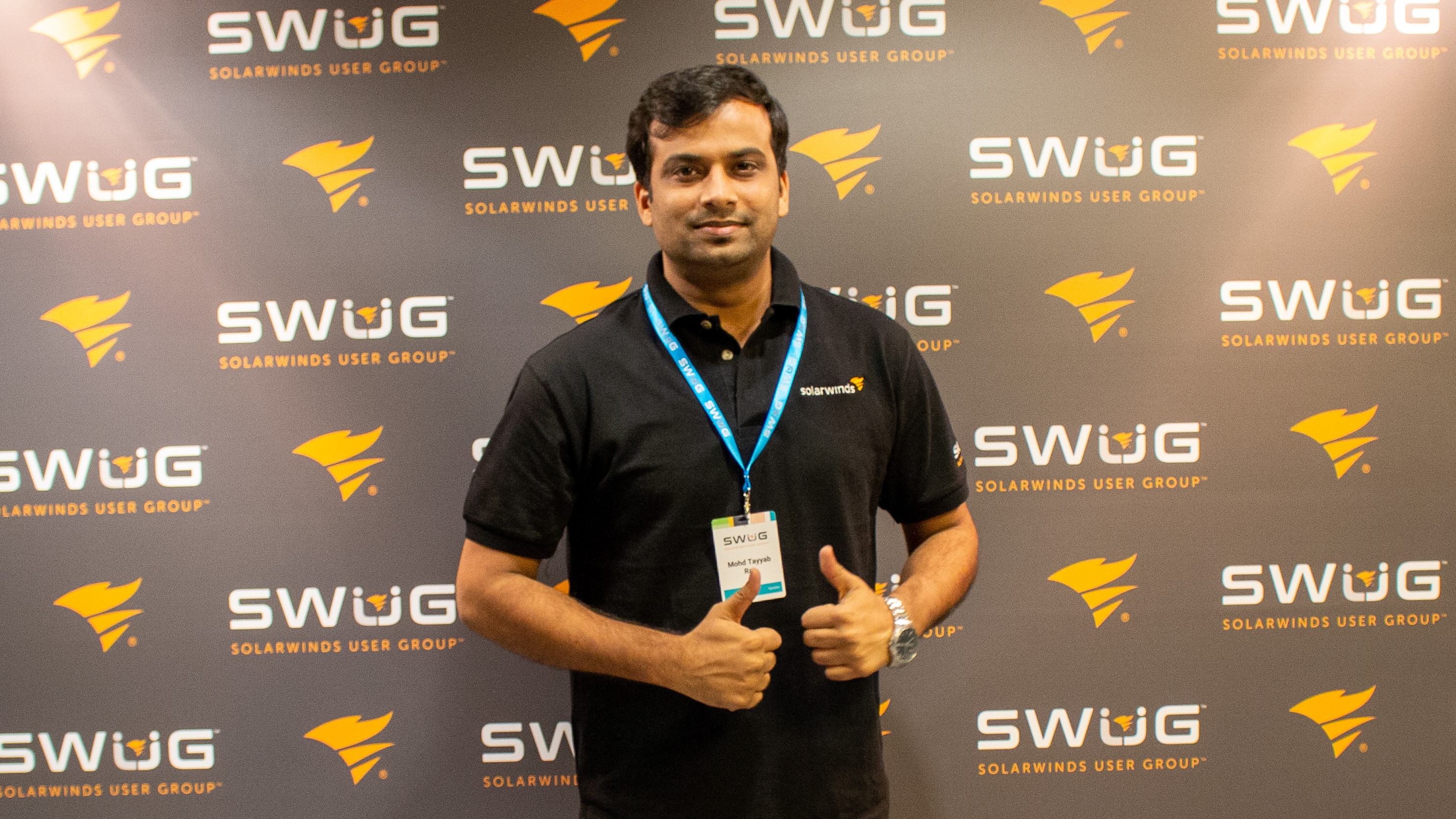 My favorite session of the day was next – all about customizations. Mohd Tayyab Rao (@mtr) has seen (and helped) customers do amazing things with their environments. He was kind enough to hop on a plane from the SolarWinds India office to share some of the most interesting ways he's seen customers customize their solutions to their business's needs. Whether it is turning your SolarWinds Platform into a light CMDB or leveraging custom HTML code to make interactive data elements. It just proves the point that the superpower of the SolarWinds solutions is the flexibility of the platform.
My favorite session of the day was next – all about customizations. Mohd Tayyab Rao (@mtr) has seen (and helped) customers do amazing things with their environments. He was kind enough to hop on a plane from the SolarWinds India office to share some of the most interesting ways he's seen customers customize their solutions to their business's needs. Whether it is turning your SolarWinds Platform into a light CMDB or leveraging custom HTML code to make interactive data elements. It just proves the point that the superpower of the SolarWinds solutions is the flexibility of the platform.
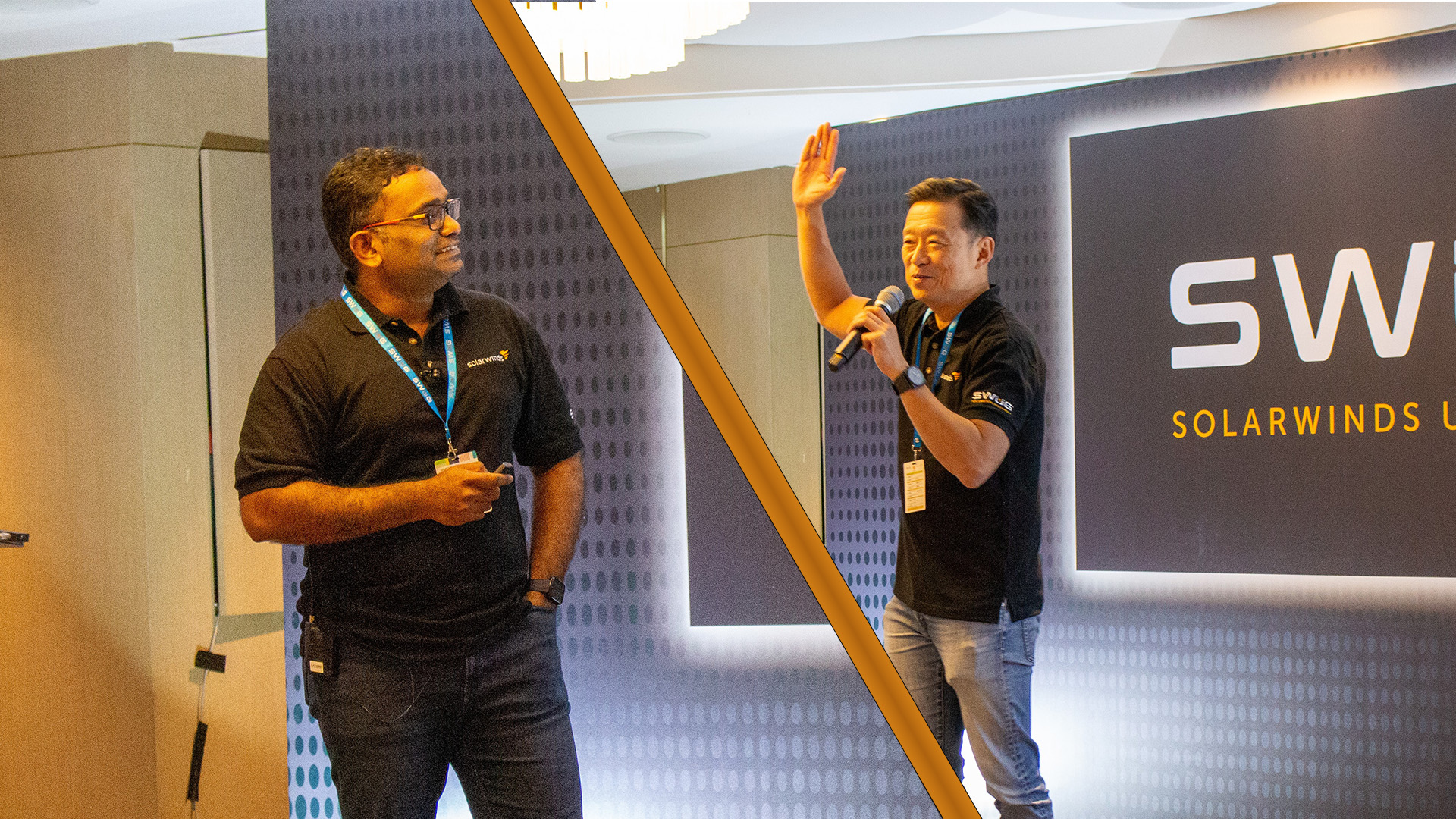 On the downhill side of the event, we had Jameel Monsoor (@jameel.monsoor) and James Wong talk about getting around the problem of your databases being a black box. They double-teamed the discussion in a one-two punch of the why and then the how. Some great discussions were had about how Database Performance Analyzer, Database Performance Monitor, and SQL Sentry can help see inside those database environments. With so much of our daily decisions being data-driven, is it any wonder that we need to know more about databases, their performance, and the underlying infrastructure’s health to have our businesses continue to operate at their peak?
On the downhill side of the event, we had Jameel Monsoor (@jameel.monsoor) and James Wong talk about getting around the problem of your databases being a black box. They double-teamed the discussion in a one-two punch of the why and then the how. Some great discussions were had about how Database Performance Analyzer, Database Performance Monitor, and SQL Sentry can help see inside those database environments. With so much of our daily decisions being data-driven, is it any wonder that we need to know more about databases, their performance, and the underlying infrastructure’s health to have our businesses continue to operate at their peak?
The final session of the day was back to me. Over the past 20+ years in IT, I’ve noticed that technology silos are an impediment to troubleshooting and mean-time-to-resolution. Our end users, be they employees of your company, external parties, or something else entirely, rely on us to keep the systems in which they operate running smoothly. They don’t understand the different between a network link that’s losing packets or a SQL query that’s horrifically inefficient – and they shouldn’t need to. It’s our job to cut through the network and application stacks and find the root of the problem and remedy it, so they can keep doing their job. That’s the goal of moving from monitoring to full observability. After all, without our organization’s end users, there would be no need for IT pros like us to help them.
Unnecessary Conclusion
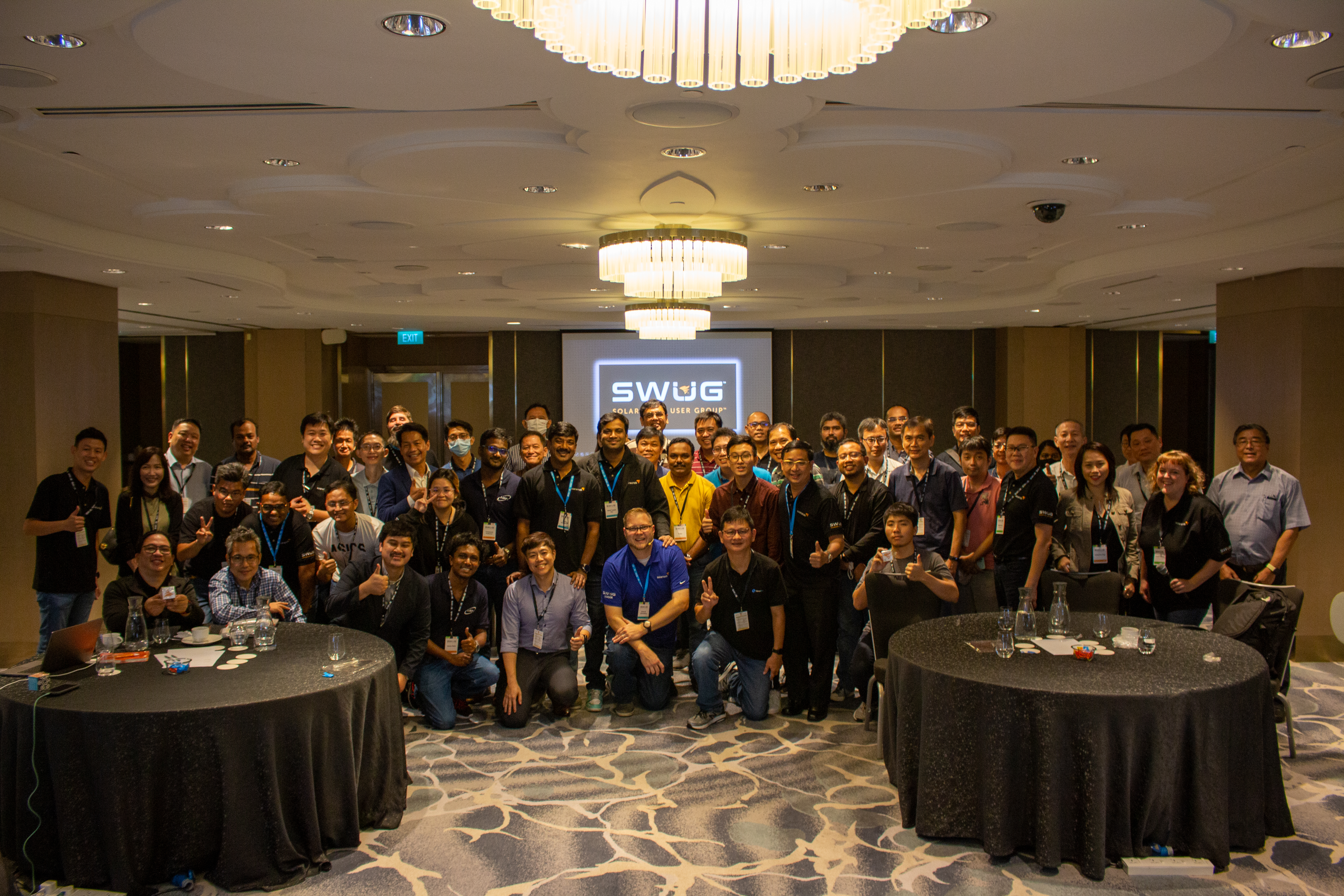 At the end of the day, I asked if everyone wouldn't mind being a part of a picture to celebrate our first SWUG in Singapore. This photo is a culmination of many, many hours of work on the part of the SolarWinds staff and the dedication to our customers and THWACK community members. See my smile? I was totally elated that the program has made it this far.
At the end of the day, I asked if everyone wouldn't mind being a part of a picture to celebrate our first SWUG in Singapore. This photo is a culmination of many, many hours of work on the part of the SolarWinds staff and the dedication to our customers and THWACK community members. See my smile? I was totally elated that the program has made it this far.
A great event was had by all and to celebrate, we hosted a networking (not that kind) happy hour. There’s no better way to get to know people than by breaking bread (and pretzels) with them. The conversations were some of the best I’ve been a part of in years of working with this program. Even as I was leaving the event, the good vibes kept on coming.
Event Follow-Up
If you attended the Singapore SWUG, look out for the feedback survey that’ll be coming your way soon. This is an ever-evolving program, so we want the feedback so we can continue to grow it. We want to bring the content you want to you so that you can succeed in your career journey. If you provided your THWACK username during registration, look out for a separate invite to a private space on THWACK where you can continue the discussions with other Singapore SWUG attendees.
What’s Next?
The SolarWinds User Group program isn’t done yet with 2022. We’ve got one last stop – this time back in the States in Phoenix, Arizona on November 2-3. It’s been years since I’ve been to the Grand Canyon state and the people in that part of the country couldn’t be friendlier. I’m looking forward to seeing some fresh faces along returning attendees.
We’re always looking to continue the discussions, so please find the staff and other attendees on THWACK and continue the conversation.
I look forward to coming back again and again to the region, but for now, this is Kevin, signing off from Singapore.